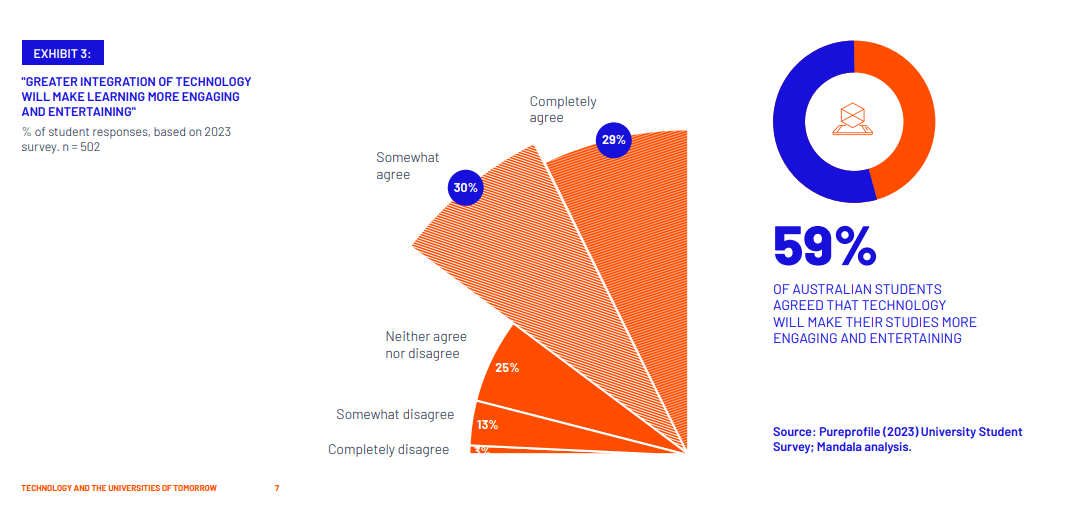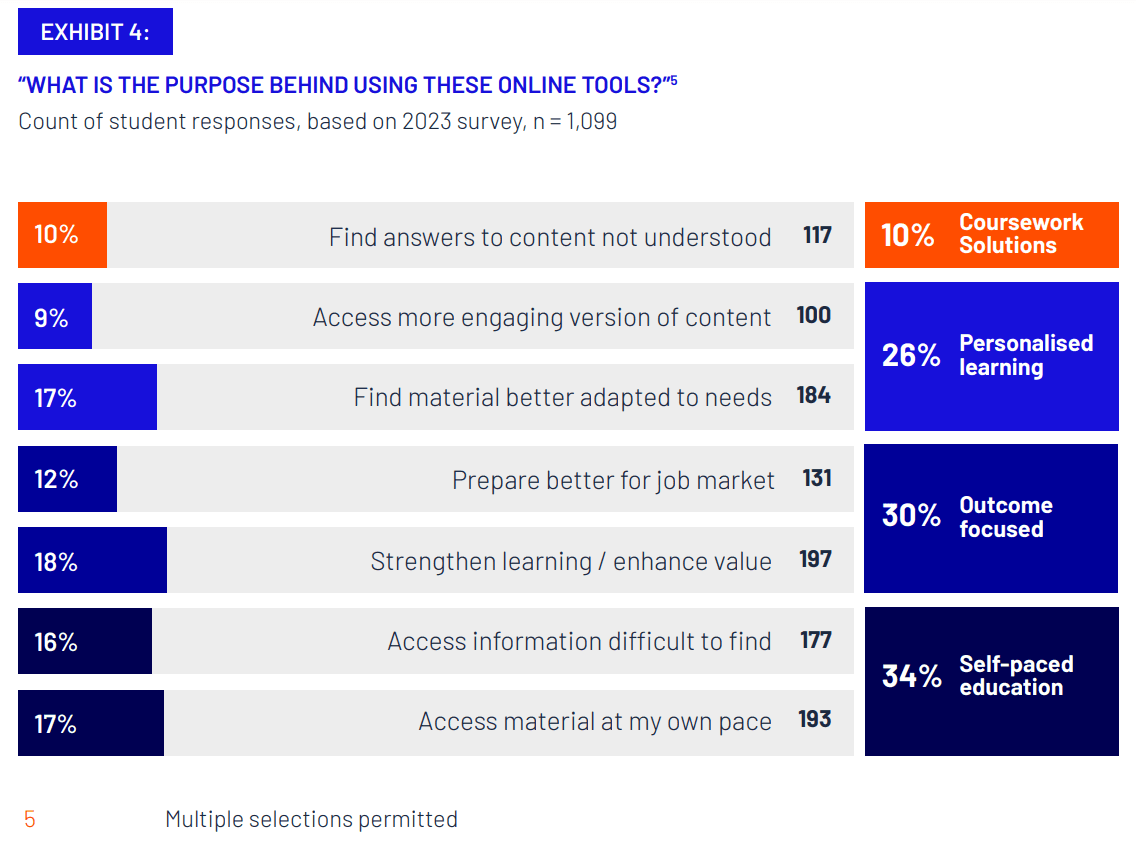
Technology and the Universities of Tomorrow
20.09.2023 - 03:20
In partnership with the Coalition for Digital Learners, Mandala explored the role of technology in higher education. We conducted a student-centric survey alongside economic modeling of how Australian universities can leverage technology to deliver better teaching, better student outcomes, and a stronger economy.
In partnership with the Coalition for Digital Learners, Mandala explored the role of technology in higher education.
This research examines the changing role of technology in universities and identifies how we could improve the performance of Australian universities and grow our economy by more than $3 billion a year.
Technology is core to the way teaching and learning is conducted today. As we consider how to strengthen universities and to be more inclusive of students from a broader range of backgrounds in the future, the position and potential of technology must be at the centre of our policy thinking.
Technology is rapidly changing university learning – and more change is coming
New technologies have transformed higher education in the past 30 years – from the advent of the internet to the use of tablets and mobile learning technologies. At each stage, universities, students and regulators have reacted and adapted to these changes. Today, students have wide availability of technologies at their disposal to support their education. This ranges from learning management software, such as Canvas, to mass open online courses (MOOCs), such as Khan Academy.

Students overwhelmingly use technology ethically and effectively
Our survey shows that most university students are using technology as supplementary tools to help them succeed in their studies – not for academically dishonest reasons.
90 per cent of students use online education tools to help them learn at their own pace, enhance their learning experience, or to make their learning more personalised and engaging. Technology provided by universities and sourced independently by students are commonly used by students of all ages and backgrounds. Just 10 per cent of students reported using technology to help them access answers to homework or exam material that they did not understand. Moreover, while this small cohort may include some with unethical motivations, it also includes students driven by a genuine desire to comprehend course material.

Technology benefits students from diverse backgrounds the most
Our survey shows students from diverse backgrounds – including those from lower socio-economic areas, those who don’t speak English as a first language, those caring for others, or those balancing study with work responsibilities – place greater importance on the flexibility and support that education technology tools offer to help them succeed in their studies.
Australian universities lag on equity, student centricity, and economic outcomes
Australia is currently lagging on the core objective of improving university participation and completion rates for people from underrepresented groups. Students from low socio-economic backgrounds make up just 16 per cent of domestic enrolments – missing the target of 20 per cent set by the Bradley Review – while less than 65 per cent of students from low socio-economic backgrounds are completing their degrees. The Universities Accord process presents major challenges to the current context, by setting ambitious future targets for the engagement of diverse and equitable groups in university education.
Improving university performance through technology could growth the economy by more than $3 billion per year
Our modelling indicates that growing Australia’s education technology sector in partnership with universities, as well as improving the application of technology in university learning, could have widespread economic benefits. To achieve this outcome, we need a range of regulatory reforms as well as a closer links between universities, industry and the Australian EdTech sector.
Read our latest posts

Optimising Australia’s Specialist Investment Vehicles for the Net Zero Journey
Mandala, in partnership with IGCC, explores how Australia’s Specialist Investment Vehicles (SIVs) are deploying public capital to accelerate the net zero transition. The report examines the current funding landscape, identifies structural challenges that limit the effectiveness of public investment, and sets out a pathway to evolve the SIV system into a more coordinated, capital-led model aligned with national priorities.
10 Dec, 2025

$160 billion and counting: The cost of Commonwealth regulatory complexity
Our latest research for the Australian Institute of Company Directors (AICD) reveals Australia’s growing regulatory burden. The cost to businesses of complying with federal regulation has risen to $160 billion (5.8 per cent of GDP), up from $65 billion (4.2 per cent of GDP) in 2013. More complex laws are contributing to the increase in costs and redirecting business resources away from growth and innovation. Board time on compliance has doubled from 24 percent to 55 percent in 10 years, while the external legal spend now sits at $16bn up from $6bn in 2010. While the UK, EU, Canada, New Zealand and US are simplifying regulation to drive growth, Australia risks falling further behind without taking immediate policy action.
2 Dec, 2025

Data Centres as Enabling Infrastructure
Mandala’s latest research, commissioned for Data Centres Australia by AirTrunk, Amazon Web Services, CDC Data Centres and NEXTDC, shows that data centres are key drivers of economic growth, renewable energy investment, and sustainable water solutions. The report finds that data centres use relatively modest amounts of energy and water while generating significant economic value, investing in power and water infrastructure that benefits communities, and helping to accelerate Australia’s clean energy transition.
25 Nov, 2025

Attracting international capital
International investment has powered Australia's property sector, with international investors providing $1 in every $3 of institutional property investment over the past ten years. Yet in recent years, Victoria and Queensland have introduced additional taxes on these investors. This report examines a critical question: are these taxes deterring the investment Australia needs to build cities, create jobs, and support economic growth? Commissioned by the Property Council of Australia, the analysis reveals that Victoria has seen global institutional investment plummet by 53% since 2022, coinciding with rising tax rates. Queensland shows similar stagnation despite strong economic conditions. Through economic modelling and case studies of stalled projects - from student accommodation to industrial estates - the report quantifies what removing these surcharges could mean for Australia's economic future and competitiveness in attracting international capital.
24 Nov, 2025